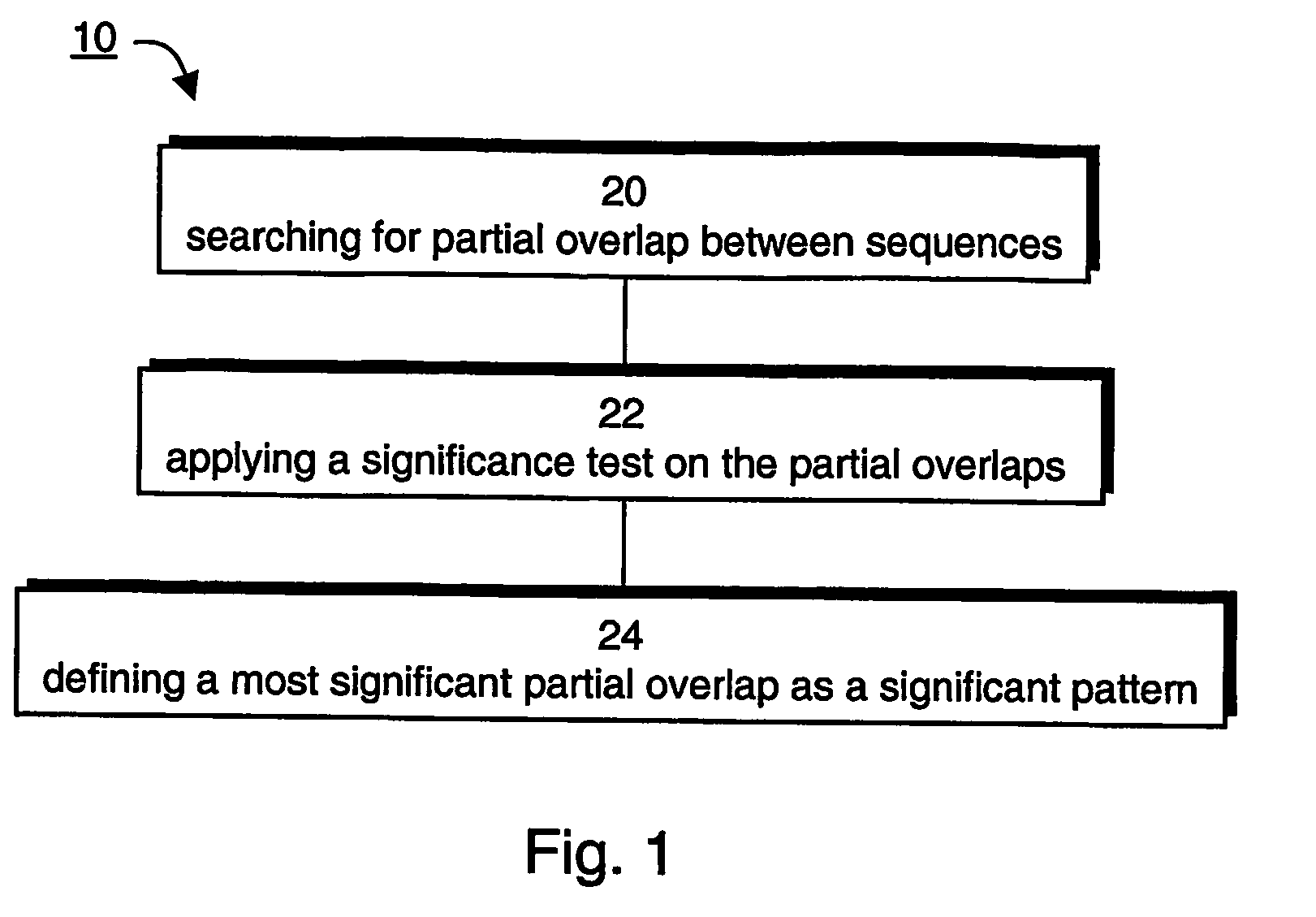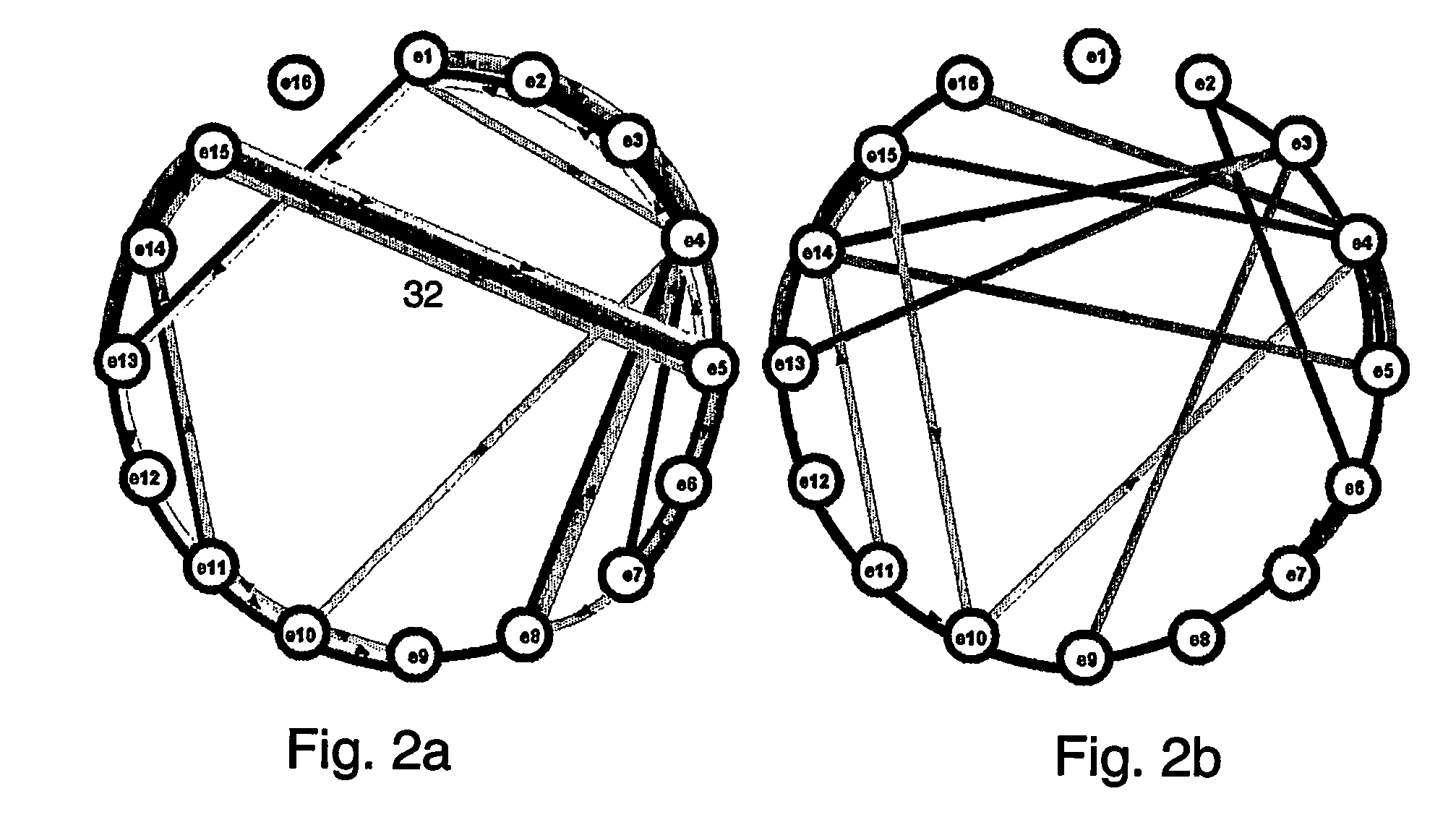Method and apparatus for learning, recognizing and generalizing sequences
a sequence and sequence recognition technology, applied in the field of pattern or sequence recognition, can solve the problems of increasing the input speed, inconvenient or uneconomical, and the inability to test unsupervised grammar induction techniques working from raw data,
- Summary
- Abstract
- Description
- Claims
- Application Information
AI Technical Summary
Benefits of technology
Problems solved by technology
Method used
Image
Examples
example 1
[0211] Following is a detailed generalization algorithm which can be used for generalizing a dataset, according to a preferred embodiment of the present invention For a better understanding of the according to the presently preferred embodiment of the invention, the algorithm is explained for the case in which the dataset is corpus of text having a plurality of sentences defined over a lexicon of words.
[0212] 1. Initialization: load all sentences as paths onto a graph whose vertices are the unique words of the corpus.
[0213] 2. Pattern Distillation:
[0214] for each path
[0215] 2.1 find the leading significant pattern:
[0216] define the path as a search-path and perform method 10 on the search-path by considering all search segments (i,j), j>i, starting PR at ei and PL at ej; choose out of all segments the leading significant pattern, P, for the search-path; and
[0217]2.2 rewire graph:
[0218] create a new vertex corresponding to P and replace the string of vertices comprising P with...
example 2
[0246] An experiment involving a self-generated context free grammar (CFG) with 53 words and 40 rules has been performed using the algorithm described in Example 1, with ω=0.65, η=0.6 and L=5. The training corpus contained 200 sentences, each with up to 10 levels of recursion. After training, a learner-generated test corpus Clearner of size 1000 was used in conjunction with a test corpus Cteacher of the same size produced by the teacher, to calculate precision and recall. The precision was defined conservatively as the proportion of Clearner accepted by the teacher, and the recall was defined as the proportion of Cteacher accepted by the learner, where a sentence is accepted if it is covered precisely by one of the sentences that can be generated by the teacher or learner respectively.
[0247] The experiment included four runs, each of 30 trials, as follows: in a first run the context-free embodiment was employed; in a second run, the context-sensitive embodiment was employed; in a t...
example 3
[0250] As stated, the generalization procedure of the algorithm is sensitive to the order in which the paths are selected to be searched and rewired. To assess the order dependence and to mitigate it, multiple learners were trained on different order-permuted versions of a corpus generated by the teacher.
[0251]FIGS. 14a-b show precision and recall of multiple learners training for a 4592-rule ATIS CFG [B. Moore and J. Carroll, “Parser Comparison—Context-Free Grammar (CFG) Data, http: / / www.informatics.susx.ac.uk / research / nlp / carroll / cfg-resources, 2001]. Shown in FIGS. 14a-b are results for corpus sizes of 10,000, 40,000 and 120,000 sentences, and context windows of sizes L=3, 4, 5, 6 and 7. For an ensemble of learners, precision was calculated by taking the mean across individual graphs; for recall, acceptance by one learner sufficed. There are three regions on the precision-recall plot of FIG. 14a, designated a, b and c. Region a is typical for very lax learner, which may raise th...
PUM
 Login to View More
Login to View More Abstract
Description
Claims
Application Information
 Login to View More
Login to View More - R&D
- Intellectual Property
- Life Sciences
- Materials
- Tech Scout
- Unparalleled Data Quality
- Higher Quality Content
- 60% Fewer Hallucinations
Browse by: Latest US Patents, China's latest patents, Technical Efficacy Thesaurus, Application Domain, Technology Topic, Popular Technical Reports.
© 2025 PatSnap. All rights reserved.Legal|Privacy policy|Modern Slavery Act Transparency Statement|Sitemap|About US| Contact US: help@patsnap.com



